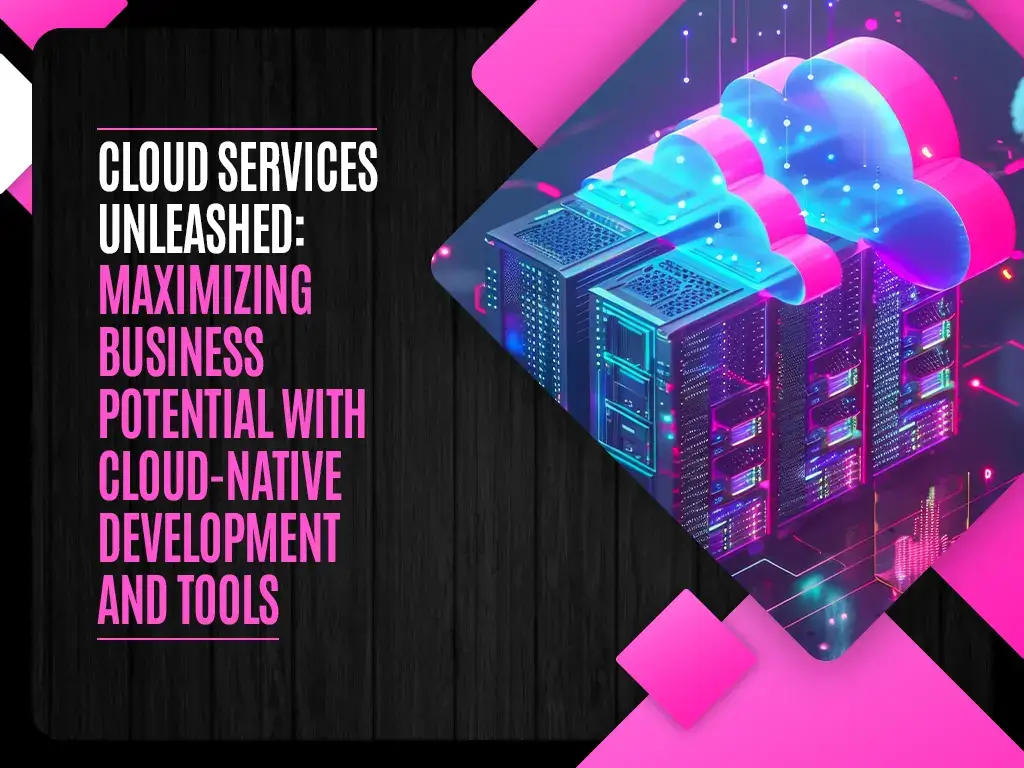Cloud Services Unleashed: Maximizing Business Potential with Cloud-Native Development and Tools

It’s not surprising that businesses are actively investing in cloud computing. After all, cloud solutions have the potential for scalability, adaptability, and economic advantages. With more people working remotely and the escalating call for eco-friendly solutions, cloud services have become the most favored option for most business organizations.
Let the numbers speak.
A notable 41.4% of tech and business leaders worldwide intend to boost their expenditure on cloud-based services and products, driven by prevailing economic conditions.
Why?
Because it opens doors to new markets and keeps data safe from prying eyes with top-notch security measures. Undeniably, cloud services can maximize business value, and this blog aims to elaborate on the same.
Cloud Native Development: Paving the Path to Maximize Business Potential
According to industry statistics, the businesses that have successfully adopted cloud-native development, have almost 50% higher likelihood of achieving the accelerated time to market. They will also have a 60% higher chance of experiencing increased revenue growth compared to the competitors.
The statistics underscore the increasing potential of cloud services in propelling business growth. Here is how it works:
1. Enhanced DevOps Efficiency
Cloud-native techniques revolutionize DevOps practices, streamlining development, deployment, and operations processes to enhance the efficiency of the software development life cycle.
Consider a software development team implementing integration and continuous deployment pipelines leveraging cloud-native tools. These pipelines automate the testing and deployment processes, allowing for high-quality deployments and minimal manual invention.
2. Embracing Low-Code and No-Code Technologies
Low code has become a mainstream approach in software development. According to the report, approximately 70% of newly developed applications by organizations are projected to leverage low-code technologies by the year 2025.
The landscape of application development shifts towards assembly and integration, driving the rise of low-code application platforms (LCAPs) and citizen development. Democratizing application development invites a wider array of stakeholders into the development process, leading to streamlined application production and swift adaptation to evolving requirements.
3. Cost-Effectiveness at its Best
Enterprises cut down expenses through the utilization of open-source tools, adoption of serverless architectures, and implementation of pay-per-use models for computing and network resources.
Serverless architectures reduce the burden of maintaining fixed infrastructure, optimizing costs based on actual resource utilization. In fact, according to industry research, businesses adopting serverless architectures witness an average cost reduction of 70% compared to traditional infrastructure setups.
On the other hand, open-source tools also deliver efficient solutions without hefty license fees, contributing to significant cost savings.
4. Adopting a Product-Oriented Operating Model
Adopting an operational model that is product-focused allows digital activities to be effortlessly aligned with business goals, promoting responsiveness and collaboration.
For instance, enterprises can improve cross-functional collaboration and responsibility, by structuring teams around particular goods or services rather than functional groups.
This change streamlines the process and makes it easier to adjust to the dynamically changing nature of cloud systems. Organizations can better address specific needs, enable a smooth transition, and promote a culture of continuous improvement by adding specialized roles like product managers and site reliability engineers.
5. Streamlined Deployment and Scalability
Cloud-native, code-based workflows enhance efficiency by automating both infrastructure and application deployments. This effectively eliminates the potential for manual errors.
Cloud-native applications are usually built using containerization technologies and microservices architecture. The projection is that by 2026, 90% of global organizations will be operating containerized applications in production, a significant increase from the 40% reported in 2021. Furthermore, it is anticipated that 20% of all enterprise applications will be running in containers by 2026, a notable rise from the fewer than 10% reported in 2020.
Leveraging container orchestration, such as Kubernetes, further amplifies this efficiency by dynamically scaling infrastructure resources based on real-time demand. This seamless scalability ensures that the cloud services can effortlessly adjust to varying workloads and user demands, optimizing resource utilization and enhancing overall system performance.
6. Resilience and Fault Tolerance
Cloud-native applications use redundancy and self-healing methods to minimize downtime and resist failures. They are carefully developed with resilience in mind. These apps boost overall system reliability and user experience by distributing components over numerous containers or instances, ensuring high availability and quick recovery from disturbances.
This proactive approach to resilience safeguards against potential outages and disruptions, enabling businesses to maintain uninterrupted operations even in the face of unexpected challenges.
Bottom Line
Cloud-native developments have revolutionized the contemporary market successfully. Businesses can reduce their infrastructure costs and complexities at work by utilizing cloud solutions. They can also quickly design, build, and implement software applications with accuracy and adaptability by utilizing cloud services.
Not only this, cloud solutions ensure that companies can adjust to the demands of the market and changing needs without sacrificing the functionality of their apps. It enables businesses to simplify their processes and overcome the difficulties brought on by the pandemic.
Moreover, by adopting cloud services, companies will be able to rule the mobile-centric market and satisfy consumers who want to purchase anywhere, at any time, on any device. Businesses need to be flexible and agile to remain competitive in today’s fast-paced market.

